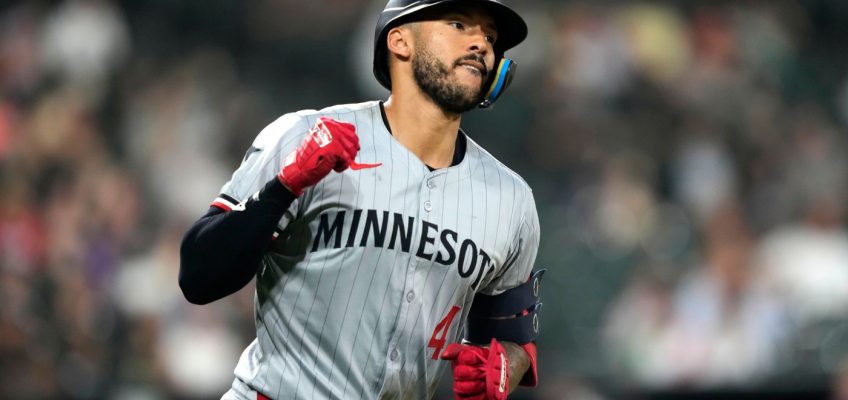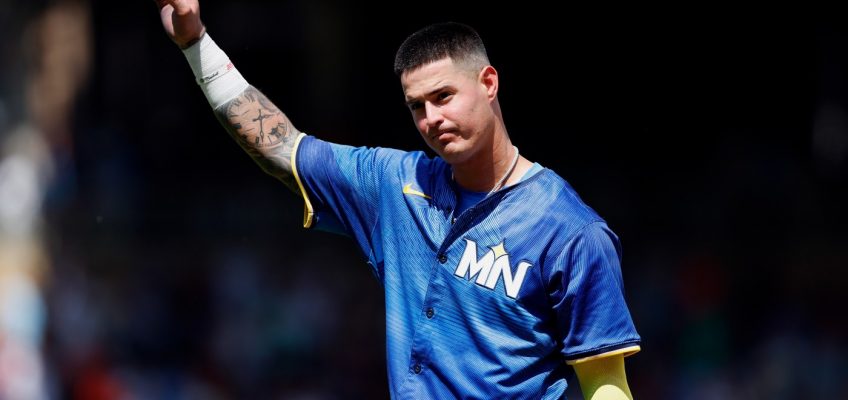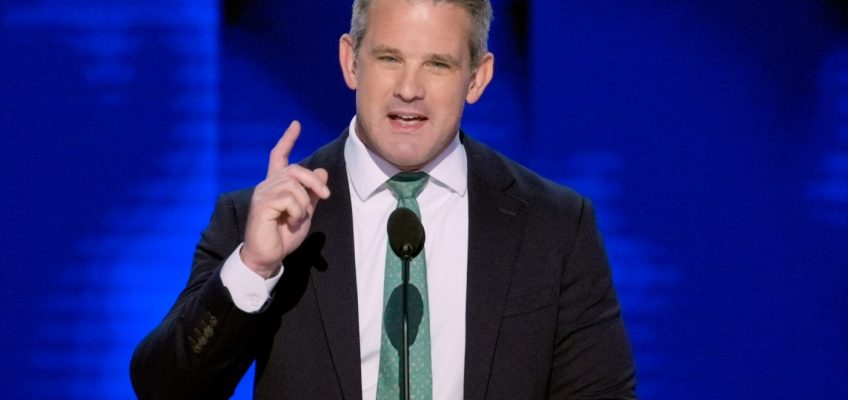PORT CHARLOTTE, Fla. — Byron Buxton and Carlos Correa made a rare trip away from Fort Myers on Monday, part of a Twins’ lineup stuffed with veterans and other players projected to make the Opening Day roster.
They only played two innings — the game at Charlotte Sports Park against the Tampa Bay Rays was wiped out by rain with the score 1-1 at the time — but their inclusion in the lineup is part of manager Rocco Baldelli’s new initiative to get the vets more playing time this spring.
That means more road trips, something that has been rare in recent years.
“I think it’s just good to get our guys out there and playing together, and out there not only early in spring but not taking two and three days in between some of their first games,” Baldelli said. “I think that’s something that we’ve looked at, identified and want to work towards when making the schedule.”
Buxton traveled for just two road trips last season — once to JetBlue Park, just a few miles down the road in Fort Myers to take on the Red Sox, and another in North Port, the closest spring training city to Fort Myers, to play the Atlanta Braves. The center fielder last journeyed to Port Charlotte in 2022.
Correa, meanwhile, never left Fort Myers last season, venturing over to JetBlue once.
“I’m a soldier,” Correa said. “Whatever Rocco tells me to do, I will do.”
If the Twins were in a more central location among spring training homes, Baldelli said, the veterans would make more trips. But as the southernmost team on the Gulf Coast, the road trips tend to be long, some topping two hours one way.
“Guys go on road trips normally when the road trips aren’t that far,” Baldelli said. “Our location in the state of Florida makes all the road trips pretty far.”
Port Charlotte, around an hour north of Fort Myers, is one of the closer trips, which is why those two — along with Royce Lewis, Christian Vázquez, Ty France and Chris Paddack — were among the group who traveled on the road on Monday.
Lewis provided the Twins’ run, hitting a homer off former Twin Zack Littell to tie the game.
“Every at-bat counts. I have a good approach right now, I’m going to keep sticking with that. Grow off of that,” Lewis said. “It was awesome for me. My mom and sister were here. Their last day here, so I’ve got to take care of business before they leave and I did that.”
Paddack throws two
Paddack took care of business on Monday, too, finishing his two innings of work just as the rain started pouring down in Port Charlotte. The starter, who did not pitch in a game after the all-star break because of an arm injury, opted to make the trip rather than throw live batting practice back at the Twins’ facility.
“I want that adrenaline,” Paddack said. “I want that competition versus someone else more so than our guys. … The biggest thing is I was ready, so I wanted to go ahead and pursue getting on the mound versus Tampa.”
Paddack gave up a solo home run to Danny Jansen, the only blemish on his day. He said he felt he emptied the tank and “really liked” where his stuff was at in his first start of the spring.
Briefly
Simeon Woods Richardson is scheduled to get the start on Tuesday when the Twins host the New York Yankees. … Edouard Julien joked to reporters to after the game to get in print that he had a good day at the plate, prompting laughs from his teammates. The infielder did not get an at-bat before the rains came.
Related Articles
Twins infielder Jose Miranda works to find offensive consistency
After first taste of majors, Brooks Lee looks to show Twins what he’s capable of
Twins remain mum on Louie Varland’s role for upcoming season
After quick rise to majors, “the job doesn’t stop” for Twins prospect Zebby Matthews
‘More than a handful’ of suitors remain after Justin Ishbia reportedly drops pursuit of Twins




